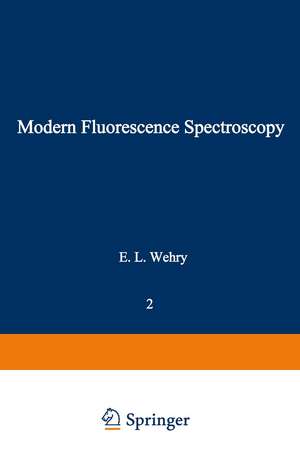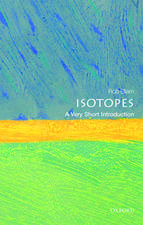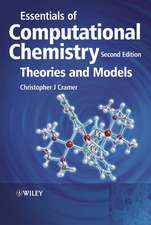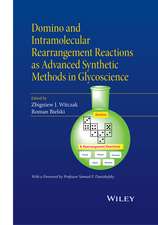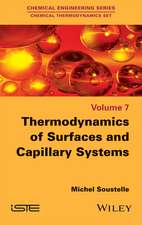Modern Fluorescence Spectroscopy: Modern Analytical Chemistry
Editat de Earl Wehryen Limba Engleză Paperback – 12 oct 2012
Din seria Modern Analytical Chemistry
- 15%
 Preț: 655.78 lei
Preț: 655.78 lei - 18%
 Preț: 949.73 lei
Preț: 949.73 lei - 18%
 Preț: 950.21 lei
Preț: 950.21 lei - 18%
 Preț: 952.89 lei
Preț: 952.89 lei - 18%
 Preț: 958.25 lei
Preț: 958.25 lei - 18%
 Preț: 951.77 lei
Preț: 951.77 lei - 18%
 Preț: 1235.57 lei
Preț: 1235.57 lei - 18%
 Preț: 1225.16 lei
Preț: 1225.16 lei - 18%
 Preț: 730.65 lei
Preț: 730.65 lei - 15%
 Preț: 643.65 lei
Preț: 643.65 lei - 15%
 Preț: 644.82 lei
Preț: 644.82 lei - 15%
 Preț: 643.00 lei
Preț: 643.00 lei - 15%
 Preț: 646.11 lei
Preț: 646.11 lei -
 Preț: 387.75 lei
Preț: 387.75 lei -
 Preț: 391.99 lei
Preț: 391.99 lei - 15%
 Preț: 649.22 lei
Preț: 649.22 lei -
 Preț: 389.88 lei
Preț: 389.88 lei -
 Preț: 391.79 lei
Preț: 391.79 lei -
 Preț: 382.57 lei
Preț: 382.57 lei
Preț: 397.38 lei
Nou
Puncte Express: 596
Preț estimativ în valută:
76.06€ • 78.38$ • 64.21£
76.06€ • 78.38$ • 64.21£
Carte tipărită la comandă
Livrare economică 01-15 martie
Preluare comenzi: 021 569.72.76
Specificații
ISBN-13: 9781468425888
ISBN-10: 1468425889
Pagini: 480
Ilustrații: XX, 460 p. 37 illus.
Dimensiuni: 152 x 229 x 25 mm
Greutate: 0.64 kg
Ediția:Softcover reprint of the original 1st ed. 1976
Editura: Springer Us
Colecția Springer
Seria Modern Analytical Chemistry
Locul publicării:New York, NY, United States
ISBN-10: 1468425889
Pagini: 480
Ilustrații: XX, 460 p. 37 illus.
Dimensiuni: 152 x 229 x 25 mm
Greutate: 0.64 kg
Ediția:Softcover reprint of the original 1st ed. 1976
Editura: Springer Us
Colecția Springer
Seria Modern Analytical Chemistry
Locul publicării:New York, NY, United States
Public țintă
ResearchCuprins
of Volume 2.- 1 Applications of Centrifugal Fast Analyzers to Fluorescence and Chemiluminescence Analyses.- A. The Centrifugal Fast Analyzer: A New Concept in Automated Analytical Instrumentation.- B. Basic Components and Principles of Operation of Centrifugal Fast Analyzers.- C. Optimization of the Centrifugal Fast Analyzer Optical System for Fluorescence Measurements.- D. Dynamic Fluorescence Referencing for Direct Calculation of Concentration and Enzyme Activity Units from Intensity Data.- E. Applications of the Centrifugal Fast Analyzer to Fluorescence, Light-Scattering, and Chemiluminescence Measurements.- F. Summary and Conclusions.- References.- 2 Applications of Luminescence Spectroscopy to Quantitative Analyses in Clinical and Biological Samples.- A. Introduction.- B. General Requirements of Clinical and Biological Analyses.- C. Methods of Clinical Fluorometry.- D. Modern Methods of Fluorescence Detection.- E. Automated Analysis.- F. Chemiluminescence and Bioluminescence.- G. The Future of Fluorometry in Clinical and Biological Analysis.- References.- 3 Fluorescent Probing of Dynamic and Molecular Organization of Biological Membranes.- A. Introduction.- B. Theory and Practice.- C. Applications to Model Membrane Systems.- D. Applications to Biological Membranes.- E. Concluding Discussion.- F. Addendum.- References.- 4 The Application of Fluorescence Techniques to the Study of Micellar Systems.- A. Introduction.- B. Experimental Techniques Used in Fluorescent Probing of Micelles.- C. Measurement of the Time Dependence of Fluorescence.- D. Theory of Fluorescence Quenching Processes in Micellar Systems.- E. Dynamics of Pyrene Fluorescence in Solutions of Simple Detergent Micelles.- F. Influence of Additives upon the Permeability of Sodium Lauryl Sulfate Micelles.-G. Pyrene Fluorescence in Aqueous CTAB Micelles. Dynamics of Motion of Solubilized Pyrene Molecules.- H. Fluorescent Probing of Specific Regions of Micelles.- I. Individual and Specific Micelles.- J. Fluorescence Studies of Phase Transistors in Micellar Systems.- K. Fluorescence Studies of Inverted Micelles.- References.- 5 Fluorescent Probe Studies of Binding Sites in Proteins and Enzymes.- A. Introduction.- B. Fluorescence of Pyridoxamine-5-P.- C. Binding of 4-Pyridoxic-5?-P to Ribonuclease A.- D. Fluorescence Indicators of Enzyme-Enzyme Interactions.- E. Energy Transfer in Pyridoxyl-5-P Protein Complexes.- References.- 6 Acid-Base Chemistry of Excited Singlet States: Fundamentals and Analytical Implications.- A. Introduction.- B. Chemical Structure and the Acid—Base Properties of the Ground and Lowest Excited Singlet States.- C. Dynamic Aspects of Proton Exchange in the Lowest Excited Singlet State.- D. Prediction of Excited-State Proton Exchange.- References.- 7 Use of Fluorescence to Study Structural Changes and Solvation Phenomena in Electronically Excited Molecules.- A. Introduction.- B. The Franck-Condon Principle.- C. Nuclear Conformation and Spectroscopic Behavior for Ring and Ring-Chain Systems.- D. Examples of Spectroscopic Studies on Ring Systems.- E. Examples of Spectroscopic Studies on Ring-Chain Systems.- F. Polar Substituent Rotations in the Excited State.- G. Studies on Solvation of the Excited State.- H. Conclusion.- References.- 8 The Study of Excited State Complexes (“Exciplexes”) by Fluorescence Spectroscopy.- A. Introduction.- B. On the “Charge-Transfer” Nature of Singlet Exciplexes.- C. The Formation of Exciplexes.- D. The Decay of Exciplexes.- E. Triplet Exciplexes.- F. The Significance of Exciplexes.- References.- Author Index.
